|
Class Dysphoria describes the mental state of unease that one experiences when they are unable to easily categorize themselves into a binary or trinary class identity. - Holly Marie Armishaw (January 2019) It is my agenda in this article to coin a new term, to create and define a protologism. If you were to google “Class Dysphoria” (at the point that this article was written) you would not find any exact matches to this term. What your search would yield, however, are definitions on “dysphoria” and particularly “gender dysphoria”. So, let us begin there. Dysphoria is the opposite sensation of euphoria. Wikipedia defines dysphoria as: “(from Greek: dysphoros - difficult to bear) a profound state of unease or dissatisfaction. In a psychiatric context, dysphoria may accompany depression, anxiety, or agitation… Common reactions to dysphoria include emotional distress; in some cases, even physical distress.”[1] A Google search also produces several results related to gender dysphoria. Wikipedia defines Gender Dysphoria (GD) as “the distress a person experiences as a result of the sex and gender they were assigned at birth”.[2]. Transracialism may evoke a similarly strong state of distress. However, it is not my contention to go into detail on either the topic of gender dysphoria or racial dysphoria, but rather to allude to them in order to draw parallels that aid in defining class dysphoria, since gender, race and class generally constitute the three main pillars of identity. [1]https://en.wikipedia.org/wiki/Dysphoria [2]https://en.wikipedia.org/wiki/Gender_dysphoria In a world that recognizes that gender and sexuality are fluid, and that race and ethnicity can be any number of combinations, it should also be clearly understood that class identity does not fall into neat and tidy packages either. Class, or to be clearer, socioeconomic class, is fluid. A trinary system of categorization - lower, middle and upper classes - are not always viable parameters for many people. Class Dysphoria speaks to anyone who finds themselves lost in clearly identifying within a singular binary or trinary class identity. Examples include:
There is a famous statement quite frequently misattributed to Queen Victoria: “Beware of artists. They mix with all classes of society and are therefore most dangerous." In fact, it was in a garbled letter from her Uncle, King Leopold of Belgium, who in 1845 wrote to his dear niece "To hope to escape censure and calamity is next to impossible, but whatever is considered by the enemy as a fit subject for attack is better modified or avoided. The dealings with artists, for instance, require great prudence; they are acquainted with all classes of society, and for that very reason dangerous; they are hardly ever satisfied, and when you have too much to do with them, you are sure to have des ennuis." Amidst this epic age of culture clash rigid categorizations of identity, including class, are insufficient and distressing to say the least. We have not had the right combination of words to express this feeling of unease regarding class definitions, until now. - Holly Marie Armishaw (February 2019)
0 Comments
The year 2018 had been a decent one for my art career. I had rekindled my business relationship my on again-off again Vancouver-based gallery who hosted my solo show “A Feminist and a Francophile” this past November. My work had been in four contemporary art fairs in the United States throughout the year: Art on Paper - NYC, Art Market San Francisco, Seattle Art Fair, and Texas Contemporary Art Fair. I was also working with private art consultants in San Francisco and in Sacramento where my work was sold at the Crocker Museum’s art auction that summer. I had a riveting studio visit from a member of the Acquisitions Committee for the San Jose Museum of Art and the main art consultant for the offices of Google, Facebook and other noted corporations. I was shortlisted for the second year in a row for an artist’s residency in Paris. My work had finally been received into Vancouver’s prestigious Contemporary Art Gallery’s Annual Gala and Art Auction. I was invited to be in a group show in New York City at Krause Gallery early in 2019. And, my work was selling to noted collectors, including an acquisition to a prominent San Francisco based collector who had recently opened his own art foundation following on the footsteps of his maternal family, who founded the distinguished de Young Museum. All my years of hard work were finally beginning to have some momentum. On October 6 of 2018, however, it was brought to my attention via an old friend that a mutual Facebook acquaintance of ours had produced a piece of text-based art that exactly echoed the slogan of my most iconic text-based art. I have been producing several variations of my Liberté Égalité Sororité © works since early 2017, which have since become an iconic part of my practice. The artist I refer to is a popular (I am told) New York based artist. We have only met via Facebook, where we became friends in 2009 and have a fluid 60 mutual friends. Having completed thirteen different variations on my Liberté Egalité Sororité © texts over the past two years, their various renditions have made public appearances twelve times included in exhibitions, art fairs, art auctions, public installations and Women’s Marches. Two of those public appearances were in NYC. There have also been at least 35 postings of this work of mine on social media, by myself, the galleries I’ve worked with, friends, colleagues, and even Canada’s preeminent newspaper, The Globe and Mail. [Image Link 1] “It’s just three words”, you might be saying to yourself. But, when an artist’s work is truly authentic, it can never just be about three words. The previous year I had first used the phrase "Liberté Égalité Sororité" as the title of my project proposal for the Summer 2017 Georgia Fee Artist/Writer’s Paris Artist Residency. In it, I proposed the creation of a series of visual and written works on the virtually unknown women of the French Revolution. While doing research one woman in particular stood out to me; Marie Olympe de Gouges. She was an 18th century writer, activist, humanist, abolitionist and feminist. (My essay on her can be read here.) The piece of writing that she is most noted for is a feminist revision of France’s Declaration des Droits de l’Homme et le Citoyen (Declaration of the Rights of Man and of the {Male} Citizen). The rights set out in the original declaration applied to only about 4.3 million French, known as “active citizens” out of a population of around 29 million. Women were deemed as “passive citizens” along with non-land-owning men, immigrants and servants. Intersectionality was not a consideration back then; those who needed equality and a voice the most, were callously swept aside. De Gouges responded with her Declaration des Droites de la Femme et la Citoyenne (Declaration of the Rights of Woman and the Female Citizen). To quote Olympe de Gouges “Homme, es-tu capable d’être juste?!”; translation: “Man, are you not capable of being just?!? I was absolutely thrilled when I first learned of the witty critique that de Gouges had written an astonishing two centuries before the term “feminist revisionism” had even become a part of our vernacular! I had found an ally in de Gouges nearly 250 years later. I had just completed a series of feminist revisionism text-based artworks entitled “How I Became a Feminist by Reading Nietzsche” based on my favorite quotes by Nietzsche, Schopenhauer and Freud, that had made such a deep impression on me in my formative late teenage years. Like de Gouges with the Declaration of Rights, I was mostly in agreement with the content of these philosophers. Their misogynistic writings, however, had made me feel excluded as though their wisdom and inspiration were never intended to apply to me, a young woman, just as the rights of the Déclaration were intended only for men. And so, by inverting the gendered pronouns of their prose, I had made their most influential quotes my own. Using the same modus operadi that I had used in my series “How I Became a Feminist by Reading Nietzsche” I similarly executed the "Liberté Égalité Sororité" by replacing the masculine signifiers with their feminine counterparts. I also rendered them both in gold leaf and in nail polish, my signature feminine medium, painting them in various shades of mauve, eggplant and fuchsia. The work in question is a critique of France’s national motto, Liberté Égalité Fraternité, which translates into English as “Liberty Equality Fraternity/Brotherhood”. The motto is proudly displayed on French currency and every federal and municipal building across France. This protocol began in 1838, though its origins are rooted in the French Revolution of 1789. I noticed the inherent contradiction in a national motto, essentially the formula for a democratic nation, that proclaims equality yet fails to recognize over half the population. To point out this inherent hypocrisy and audacity, the idea of replacing the word “Fraternité” with its feminine counterpart “Sororité (Sisterhood)” came freely and naturally to me at this point in early 2017. It was simply a matter of combining my passions for French history and culture with feminism thus continuing the pattern of feminist revisionism in my art practice. Hence Liberté Égalité Sororité soon became a signature work and concept in my art practice - my rallying cry. The inspiration for the original choice of the word “fraternité” did not escape my notice. Having grown up in a family of Freemasons, men and women alike, on both maternal and paternal sides of the family, I understand the concept of fraternity or “brotherhood”, perhaps clearer than most. Researching and visiting important sites of Freemasons and their predecessors, the Knights Templar, has been a minor obsession of mine for over 20 years. “By the time of the French Revolution, there were some 1250 Masonic Lodges in the country (France).”[1] Freemasonry had been a prominent means by which the ideas of the Enlightenment had spread across Western Europe. The Revolution had been an effect from which the Enlightenment had been the cause. There is no wondering why the French King tried to suppress the publication and dissemination of Diderot’s Encyclopaedia, which was the equivalent of today’s Wikipedia. The Encyclopaedia empowered the middle class through the spread of knowledge acquired through the scientific revolution and the Age of Reason. If science and destroyed the authority of the church then the king could not claim to be a “divine ruler appointed by God”. The New World Order, which is demonized by conspiracy theorists, is simply the throwing off of the Ancien Régime (Ancient Regime) that was built on tyranny and autocracy. Freemasonry is often associated with a nefarious tone, which may be ill-deserved. Nefarious to whom, I ask? Secret societies were formed because of the powerful hold that the church and the monarchy held over entire nations of people. Of course people had to meet in secrecy to discuss ideals of the Enlightenment in the face of censorship and imprisonment. And, accusing them of heresy or evil was a necessary attempt to quell their power. Speaking against the church, even when using scientific logic, was speaking against the King whose position depended upon the church, which was therefore treason. Knowledge was, and still is, a dangerous threat to the balance of power. We can witness its present perceived threat in extremist communities that deny girls equal access to education even still in the 21st century. Ignorance is a weapon against the masses, which the brotherhood sought to cast off. This plight against ignorance continues today still in various forms including politics, the sciences, art and literature. [1]https://en.m.wikipedia.org/wiki/Grand_Orient_de_France Witnessing the present increasing hatred and discrimination that continues to proliferate and the depreciation for democratic ideals such as liberty and equality (through the increase in both domestic and foreign terrorism that threaten the pursuit of liberty), I turned my attention to the those who fought to develop a society built upon those core democratic principles. I began to create artwork that was not just about the roots of democracy, but about the French influence that propagated them and the women who have been largely left out of the historical picture. And so, in early 2017 I applied for the aforementioned Georgia Fee Paris Residency and was shortlisted for their international competition. Though I ended up as a runner-up, by that point I had become so passionately invested in the idea of my project that I worked out a way to make it happen nonetheless. During that summer I rented an apartment in Paris and spent June and July diligently pursuing traces of the heroines of the French Revolution who had fought so hard to support the revolutionary cause there. Not only were these women left out of the majority of history books and their artifacts lost to time, but most of them had perished in a most tragic way. While the men who supported the Revolution were honoured and glorified, the women who shared the same commitment of dedicating their lives to the revolutionary cause were restricted from public speech and office, became the source of ridicule and threats, were subjected to public beatings, rape, imprisonment, interrogation, exile, slander and worse. These women include: Olympe de Gouges, Charlotte Corday, Théroigne de Méricourt, Manon Roland, Germaine de Stæl, Clarie Lacombe and Pauline Leon, none of whose efforts to advocate for the pillars of democracy were welcomed by their “brothers”. Most of them had ended up guillotined, ironically charged as “enemies of the Revolution”. Others fled persecution to neighbouring countries or ended up in mental asylums. The majority of the men in power at the Assemblée Nationale shared something in common with the Freemasons (albeit they were 24% one and the same [2]) who both believed that women had much too delicate of a countenance to be involved in such nasty matters as politics. Their place, the Jacobins said, was to be at home caring for the raising of a young generation of Republicans. "Women were taught to be committed to their husbands and 'all his interests... [to show] attention and care... [and] sincere and discreet zeal for his salvation.' A woman's education often consisted of learning to be a good wife and mother; as a result, women were not supposed to be involved in the political sphere, as the limit of their influence was the raising of future citizens."[3] [2] https://www.kamloopsfreemasons.com/wp-content/uploads/Freemasonry-And-The-French-Revolution-1.pdf [3] https://en.wikipedia.org/wiki/Women_in_the_French_Revolution During that time I put a tremendous amount of effort into searching Paris for evidence of the women who had fought so hard to support the revolutionary cause there. Not only were these women left out of the majority of history books and their artifacts lost to time, but most of them had perished in a most tragic way. While the men who supported the Revolution were honoured and glorified, the women who shared the same commitment of dedicating their lives to the cause were restricted from public speech and office, became the source of ridicule and threats, were subjected to public beatings, rape, imprisonment, interrogation, exile, slander and worse. These women include: Olympe de Gouges, Charlotte Corday, Théroigne de Méricourt, Manon Roland, Germaine de Stæl, Clarie Lacombe and Pauline Leon, none of whose efforts to advocate for the pillars of democracy were welcomed by their “brothers”. Most of these women that I tracked had ended up guillotined, ironically charged as “enemies of the Revolution”. Others fled persecution to neighbouring countries or ended up in mental asylums. Apparently the majority of the men in power at the Assemblée Nationale shared something in common with the Freemasons (albeit they were often one and the same) who both believed that women had much too delicate of a countenance to be involved in such nasty matters as politics. Their place, the Jacobins said, was to be at home caring for the raising of a young generation of Republicans. "Women were taught to be committed to their husbands and 'all his interests... [to show] attention and care... [and] sincere and discreet zeal for his salvation.' A woman's education often consisted of learning to be a good wife and mother; as a result women were not supposed to be involved in the political sphere, as the limit of their influence was the raising of future citizens." [4] [4] https://en.wikipedia.org/wiki/Women_in_the_French_Revolution My commitment to the cause of Liberté Égalité Sororité and the heroines of the French Revolution involved several photographic excursions to search for and to photograph their presence in history. My quest took me to ancient prisons, a mental asylum, the site where the guillotine was invented, the place where thousands of executions occurred, the street where an assassination by a young woman on one of the blood-thirsty radical revolutionaries happened, the former site of the Templar fortress, a national Masonic lodge, clandestine rooms atop restaurants where covert operations were discussed, museums, official historic institutions, and even to a cobweb infested staircase beneath my apartment that led to the underground tunnels/catacombs. These and other journeys, alongside research through countless documentaries, books and articles, all carried out en Français, reveal the legwork, passion and dedication behind my creation of the Liberté Egalité Sororité artworks. As the Women's Movement sweeps across the globe I regard it as unfinished business not just for ourselves, but for the rights of those whose lives were swept under the carpet in the past, and as a battleground for the women of generations to come. The past, present and future are inextricably linked, hence, my interest and practicing feminist revisionism in my art since 2011. A friend and colleague of mine declared "He’s capitalized on the #MeToo movement by stealing from someone whom the movement is meant to protect!", upon hearing about the appropriation of my "Liberté Égalité Sororité" work regarding the aforementioned NYC artist. Maynard Monroe has appropriated my artwork, a rallying cry for female equality, for his own personal gain and twisted the context to cover his tracks. This artist’s portfolio suggests that this isn't the first time he's "borrowed" phrases from other artists for his text-based work. That, and his social media also suggests that he doesn't have any interest in France or French culture, nor speaks French. But the most telling fact is that what an artist’s work will always betray - patterns. Feminist revisionism and the inverting of gendered pronouns are devices that this artist has never used in his work before this piece; it simply doesn't fit his pattern. Despite the hypocrisy of claiming to be a feminist, please, tell me again how this is "an original M.M. work" and not simply a nonchalant appropriation of a Facebook friends’ work because she has less visibility and is therefore fodder for someone of higher repute and lesser integrity. The art world asks why there aren’t more successful women artists. Perhaps more women, of the past, present and future, would achieve their lofty ambitions if men weren't perpetually taking from us and thwarting our career attempts. Whether it be stealing our sense of autonomy, crippling us with trauma, or appropriation of intellectual property, enough is enough! Perhaps my sentiment is best expressed by the Notorious RGB (Ruth Bader Ginsberg): “All we ask of our breathren is that they take their feet off our necks.” - Holly Marie Armishaw (2019) Timeline of Liberté Égalité Sororité public appearances. Suggested Readings: Moore, Lucy. Liberty – The Lives and Times of Six Women in Revolutionary France. Harper Collins Publishers, 2006. Birch, Una. Secret Societies - Illuminati, Freemasons and the French Revolution. Ibis Press, 2007. Poirson, Martial. Amazones de la Revolution (Des Femmes dans la tourmente de 1789). Gourcuff Gradenigo, 2016. Blanc, Olivier. Olympe de Gouges – Des Droits de la Femme à la Guillotine. Éditions Tallandier, 2014. https://www.kamloopsfreemasons.com/wp-content/uploads/Freemasonry-And-The-French-Revolution-1.pdf Olympe de Gouges was arguably the most important woman of the French Revolution. Although not as well known as others, particularly in English speaking circles, de Gouges produced a body of written work that expressed important ideals on human rights that were quite radical during that time, but are taken for granted in most democratic countries today. Her clarity of recognizing injustice was unparalleled in late 18th century France. She acted with a fearless moral compass on behalf of oppressed persons without distinction of class, race or gender, whether they were colonized slaves or the king of France. Armed with a quill pen as her only weapon, de Gouges headed into the bloody Reign of Terror and nothing short of the guillotine would deter her bravery in fighting for human rights. The outbreak of Revolution was a source of great optimism for the women of Paris in hopes that the changes to be gained would be to the benefit of all persons, including themselves. Olympe De Gouges hopes for the Revolution differed from those of the women who marched on Versailles in that their demands were aimed at immediate needs like the securing of bread and wheat, while de Gouges had loftier sights such as gaining long-term political equality for women. This gained her a reputation as one of the most notable and earliest feminists of France. One of the most pivotal events in the French Revolution was indeed the Women’s March on Versailles on October 5th and 6th of 1789, which pressured King Louis XVI into finally signing the Declaration of Rights and in bringing him and the royal family to the Tuileries Palace in Paris where they would be at the mercy of the Revolutionaries. However, the rights that those women had marched and fought for would not be their own. The Declaration of the Rights of Man and of the Citizen (Déclaration des Droits de l’Homme et du Citoyen) did not include women, nor even consider their needs. Women were categorized as passive citizens, meaning that they were unable to vote and excluded from the rights laid out in the Declaration. Likewise, men who were servants also considered passive citizens. Only land-owning men were afforded the rights of “universal” suffrage. Ironically, this monumental document was inspired by and Jean Jacques Rousseau and cited his Enlightenment principle that “all men are born and remain free and equal in rights”. Article VI of the Declaration states that “The law is the expression of the general will” and yet excludes over half of the general population. In fact, the estimated population of France at that time was approximately 29 million people, but only 4.3 million Frenchmen were extended the rights of active citizens. This document, rife with contradictions, was written by bourgeoisie men for bourgeoisie men. Laughably, Article XII states “The guarantee of the rights of man and of the citizen necessitates a public force: this force is thus instituted for the advantage of all and not for the particular utility of those in whom it is trusted.” And so, with her sharp intellect, Olympe de Gouges attacked the Declaration using the wit and language of an Enlightenment philosopher, releasing it’s antithesis in 1791, the Declaration of the Rights of Woman and the Female Citizen (Déclaration des Droits de la Femme et de la Citoyenne). As the National Assembly worked to establish new laws to replace those of the old regime (l’Ancien Regime), Olympe de Gouges fought to address them with demands, which might extend natural law to all French people, including women. In the name of liberty and equality she wrote 40 plays, two novels and over 90 political pamphlets. Her recommendations, contained within these writings, included:
From her biography it can be deduced that Olympe de Gouges unwavering commitment to combat for those who were oppressed was influenced by her own life as a marginalized individual. Born in 1748 as Marie Gouze to a petite bourgeoisie family in Montauban of South Western France, she was the illegitimate child of a man of power and wealth, Jean-Jacques Lefranc, Marquis de Pompignan. Her biological father, however, refused to publically acknowledge her as his daughter. The ill treatment of both herself and her mother compelled Marie to later plead for rights such as child-support on behalf of illegitimate children and their widowed mothers. Married off at the age of 16 to a local innkeeper of Montauban, it was a most unhappy marriage for Marie, no doubt, inspiring her to later fight for women’s right to divorce. The parallels are endless. Olympe de Gouges relentless pursuit of equality being significantly based on personal experience foretells the second wave feminism of the 1970’s whose rallying cry was “The personal is political”. “The movement encouraged women to understand aspects of their personal lives as deeply politicized and reflective of a sexist power structure.”[1] Widowed by age 18, in 1770, she and her son Pierre moved to Paris where she reinvented herself as Olympe de Gouges, an amalgamation of her mother’s and father’s names. Although she had long-term partners in Paris, de Gouges refused to re-marry as doing so would limit her political freedom and allow a husband ownership over her intellectual property. Inspired by her biological father who was regarded also as a man of letters, de Gouges followed in his footsteps, leading her to the salons of Paris and literary circles. As a young women of the French provinces, de Gouges had received only a nominal education by local nuns. The French dialect of Montauban was also very different from that of Parisians, and so her grasp of the language, both spoken and written, was indeed a challenge. Likely it was this challenge that inspired de Gouges to fight for the equal education of girls. Furthermore, it was argued that women could not be allowed to vote because they weren’t educated and therefore could not make educated decisions. So by keeping girls from being educated, they were also thereby kept from voting, a practice that is still prolific in some parts of the world today. De Gouges fight for women to hold political equality foretold the fight for suffrage in the 19th century, which heralded the first wave of feminism. However, it would not be until 1944 that women in France gained the right to vote. "Women have the right to mount the scaffold, they must also have the right to mount the speaker's rostrum." Olympe de Gouges Acknowledged mostly as a feminist, Olympe de Gouges was, above all, a humanist. In 1784 she wrote the play Zamore and Mirza or The Enslavement of the Blacks (Zamore et Mirza ou l’Eclavage des Noirs). Sadly, the play was shut down after only three performances due to the brawls that ensued between abolitionists and businessmen who had an interest in the slave trade. Ten years later, de Gouges fight was reconciled when slavery in the French colonies was abolished in 1794. Unfortunately though, in 1804 Napoleon reinstated slavery in the sugarcane growing colonies under regulation of the Napoleonic Code. But by the 1850’s France, Britain the United States had abolished and criminalized slavery. However, the slave trade is still alive today as seen in CNN’s 2017 exposé of Libya, proving that this dark stain on humanity is one not easily eliminated. Extending her ideology of the right to a fair trial to be extended to all persons, was to be her downfall. Stripped of his title as king, Louis XVI had become simply Louis Capet, and was facing trial for treason against France. De Gouges, who was also against capital punishment, offered to act as his legal counsel. She stated that “As king, I believe Louis to be in the wrong, but take away this proscribed title and he ceases to be guilty, in the eyes of the republic”.[2] Her alignment with the moderate Girondins was barely tolerable, but what was perceived as her support for the monarchists, had crossed the line tantamount to being an “enemy of the Revolution”. In one of her most memorable statements, Olympe de Gouges declared “women have the right to mount the scaffold, they must also have the right to mount the speaker's rostrum". Sadly, while she would never be permitted to enjoy the latter, her prolific career as a playwright and human rights activist would come to an end at the drop of the blade on November 3, 1793.
|
| The French Revolution was provoked not just out of discontent over an out-of-touch monarchy, but also largely by the ideas of the Enlightenment. Many of the leading proponents of the Enlightenment era included philosophers, scientists, political theorists, and other intellectuals. They opposed divine right and faith in favour of logic, reason, humanism and the scientific method. They encouraged one another to question everything for themselves, to to come to logical conclusions, rather than simply believe what they are told. With the newfound belief that they had a natural right to equality among men, the right to a life of liberty, and the respect for rights of other men, this brought about a sense of brotherly love, which encouraged men to do what was best for the common good, providing further incentives for the organization of fraternal orders. The most famous of these fraternities, the Freemasons, still exists today. Enlightenment ideals spread like wildfire throughout France and the rest of Europe, causing many countries to ban fraternal organizations for fear of their “dangerous thinking” spreading to other nations as a new world order developed. |
The Foundation Louis Vuitton, owned by LVMH, is a great example of one the major corporate sponsorships of the arts, as is so often seen in Europe. The highly anticipated spectacular building, designed by renowned architect Frank Gehry, opened in the fall of 2014. It is located at the far West side of Paris near the edge of the Bois de Boulogne. The exterior of the Foundation Louis Vuitton has recently been transformed by French artist Daniel Buren through a site-specific installation of grand proportions, patterning the glass façade with colored films in his signature modernist repetitive aesthetic. However the best feature of FLV, of course, lies within the glass walls. The current exhibition features contemporary Chinese artists including Yang Fudong, Ai Wei and many others. The most impressive feature may be two large works by artist Zhang Huan who uses incense ash gathered from Buddhist temples from his home city in his work. Using the ashes on linen, the artist has created what at close scale looks like a scattering of debris, but at far range comes into focus as historical scenes of Tiananmen Square and another of the Chinese people digging a massive canal. Painting, sculpture, video and animation run throughout the exhibit.
The Marais, also known as the 3rd and 4th arrondisments of Paris, has the highest concentration of contemporary art galleries in the city. Renowned international dealers like Emmanuel Perrotin, Thaddeus Ropac, Marion Goodman, and many, many others have spaces here. Some of them, limited by the scale of the historical architecture, have two spaces in close proximity to one another. Many of the world’s most prestigious artists are shown in these galleries as well as young talents. Pick up a gallery guide at your first stop for a detailed list of all the current contemporary art exhibitions in the city. To see them all in detail will likely take two full days. The galleries themselves are often very discreet from the street and difficult to locate unless you know what you are looking for. Watch for small bronze plaques bearing the gallery names on the walls outside courtyard gates. It is in these discreet spaces that you will experience the height of the Parisan contemporary art scene.
The Palais de Tokyo, named after the now non-existent avenue it was built upon, features temporary exhibitions of French and international contemporary art. The Palais de Tokyo has become the most dynamic hub in the city featuring a broad program of that includes exhibitions, site-specific installations, performances, collaborative projects, film screenings and lectures. Memorable exhibitions here include those by Ryan Gander, Thomas Hirschorn, Hiroshi Sugimoto and others. A suite of new exhibitions has just opened, filling the altered basement with works by David Ryan & Jérôme Joy, Dineo Seshee Bopape, Marguerite Humeau, Ayoung Kim, Mika Rottenberg, and Michel Houellebecq. The Palais de Tokyo is open late, which is perfect also because they have a fantastic restaurant, Monsier Blue. If you make reservations and the weather is pleasant, you may be able to sit on the terrace, which provides a spectacular view capping off a perfect evening at the Palais.
One of the greatest joys of Paris is that the arts of all types are made readily accessible to the public, if you know where to look. Though the first arrondisment is most noted for the world-famous Louvre, it is not without it’s contemporary art treasures scattered about. In fact, the Lourve often collaborates with notable local galleries and has featured some phenomenal projects. This summer one can view a site-specific installation by artist JR at the Lourve Pyramid that has made European art news headlines. A detailed stroll through the adjacent Tuileries gardens often holds a few surprises. Among them, a Lawrence Weiner permanent installation along the North wall, adjacent to the Rue de Rivoli. At the end of the Tuileries lies the Jeu de Paume, a historical building known as the place where the Tennis Court Oath was signed, it is now a dedication photography gallery featuring temporary exhibitions of notable international photographers. Nearby in the courtyard of the Palais Royale one can view a permanent installation by French artist Chris Burden while sipping rosé in the afternoon sun at one of the café terraces.
The French are a world leader in cultural fusions, creating hybrid collaborations that marry contemporary art with music, fashion, design, architecture, and history. Summer is the best time to visit Chateau Versailles, which is a mere half hour train ride from Paris. Versailles has a program that allows for one chosen artist per year to work with the palace or it’s spectacular gardens where a grand exhibition of their work is installed. Imagine strolling the intricate and historic gardens designed by French landscape artist Andre Le Notre in the 18th century and coming upon a sculpture by Takashi Murakami! Other artists featured at Chateau Versailles include Jeff Koons, Bernar Venet among others. This summer features Danish-Icelandic artist Olafur Elliason. While some of the works are so subtle that you might now realize that you are looking right at them, others mesmerize tremendous crowds. Working with elements such as light, mirrors, fog, water, and earth, his installations are cleverly interwoven into the history of the chateau itself.
North of the Opera lay some of Paris’s most renowned department stores, featuring designer labels from around the world. Les Grandes Magasins are, in themselves, an experience, especially by North American shopping mall standards. While many go for the shopping, and stay for tea at Laduree in Printemps, or lunch under the stained glass domes, there is more. Galeries Lafayette has it’s own exhibition space, aptly known as Galerie des Galeries. This is a vibrant contemporary art space that often features the work of local Parisian artists and allows an opportunity for experimental art projects of the highest caliber. This summer features TOILETPAPER, a collaboration between Maurizio Cattelan and Pierpaolo Ferrari, which opens on July 6th.
Day 8: Saint-Germain de Près
Though Saint-Germain has many galleries, most are of a more decorative or design oriented type. However, one of Paris’s best contemporary art dealers also has not one, but two spaces there. Kamel Mennour represented an impressive stable of artists that include Anish Kapoor, Jake & Dinos Chapman, François Morellet and Duchamp Prize Winner Latifah Echakchch. An exhibition of profound and stunning works by Japanese-Korean artist Lee Ufan recently opened at Galerie Kammel Mennour's 28 avenue Matignon space. These minimalist works are both profound and stunning. Nearby at Mennour's initial space at 28 avenue Matignon, an exhibition of photographs by controversial artist Nobuyoshi Araki are on view.
Although the Pompidou Centre’s mandate is focused on modern art, some of the most impressive curated exhibitions of contemporary art that I have ever seen have been here at the Pomipdou. Excellent examples of both French and international artists work can be seen here. The Pompidou Centre’s partnership with ADIF (Association for the International Diffusion of French Contemporary Art) allows for the annual winner of the Prix Marcel Duchamp to have a solo exhibition. For those who don’t already know, the Prix Marcel Duchamp is France’s version of the U.K.’s Turner Prize. The 2015 Laureate’s exhibition Melik Ohanian’s “Under Shadows” is currently on view in a fusion between poetry and science in an environment that expresses various dimensions.
Though it may be a bit of a trek into unknown territory, it is well worth it to take the journey to Paris’s Pantin area. As in any major city, real estate is at its prime rates in the most dense urban areas, so gallerists often seek space outside the core, transforming less desirable neighborhoods into vibrant, eclectic hubs of art and culture. Thaddeus Ropac, for example, has opened a large project space in Pantin. Other dealers like Jocelyn Wolfe and Creve Cœur have their main spaces located here. The truly dedicated art professional will make the journey to Pantin.
By the time you have completed this itinerary, you will have seen some of the most important contemporary and historical neighborhoods of Paris, although this list is by no means exhausted. Paris is an exceptional hub of cultural diversity at any time of the year, but the summer months are when it is most delightful to wander the city. However, during the month of August is when most Parisians take their annual vacations and head for beachfront destinations. You will find most galleries have closed their doors for the entire month, to resume their business again come September.
Holly Marie Armishaw is a Vancouver-based contemporary artist primarily using photography and digital imaging to create imaginary realms and states of being. She is also an independent scholar on art, history and culture.
Without forgetting her own Western education and influence, and having gone to university in the U.S. at the crux of second-wave feminism in the 1970’s, Shirin Neshat has imbued her subjects with a gaze that simultaneously confronts and defies the male gaze. Perhaps the most poignant image in the series is this one pictured below, in which the face of the women is bisected by the barrel of the rifle, just as Shirin Neshat’s own life and has been bisected by Islamic and Western influences.
The film beautifully captures the depth of each character and their internal states through a physical terrain. Drawing from Shirin Neshat's earlier use of poetic symbolism, this physical terrain is poetically depicted in the forms of the hard concrete streets and buildings of Tehran; a long, lonely road leading to the possibility of change; a wall that separates the orchard from the outside world (as seen above) with an opening small enough to enter as water flows freely through it; the dark, barren forest; the dense foggy marsh that Zarin is found floating nearly dead in (seen below); and the lush jungle-like garden which rays of sunshine pierce through in a stroke of optimisim. The orchard becomes a place where these women can escape their veils of oppression, as so poignantly conveyed by the veil dropped outside the wall.
"This film is dedicated to the memory of those who lost their lives in the struggle for freedom and democracy in Iran from the Constitutional Revolution of 1906 to the Green Movement of 2009." (Women Without Men)
Humanitas: Shirin Neshat at the University of Oxford, Lecture – YouTube https://www.youtube.com/watch?v=pySIgzyDvKk&ebc=ANyPxKqxD84_4HLSkW-CRBpZ0Zquxn01rKDkoF8oTad2Y4kGQ7Yosp9emoOAYwM94h3bkowldKKLDhNqosW66U4FAhZZJTU7Aw
Shirin Neshat: Art in exile – YouTube
https://www.youtube.com/watch?v=4YS3gGpnPe8
http://womenwithoutmen.blog.indiepixfilms.com/
https://en.wikipedia.org/wiki/Iranian_Revolution
http://blog.movements.org/how-iranian-women-are-dealing-with-their-oppression/
Shirin Neshat, Women of Allah Series https://teachartwiki.wikispaces.com/Shirin+Neshat,+Women+of+Allah+Series
Green Women of Iran: The Role of the Women’s Movement During and After Iran’s Presidential Election of 2009
https://www.sssup.it/UploadDocs/18086_7_S_Green_Women_of_Iran_The_Role_of_the_Women_s_Movement_During_and_After_Iran_s_Presidential_Election_of_2009_Victoria_Tahmasebi_Birgani_13.pdf
https://en.wikipedia.org/wiki/Women's_rights_in_Iran#Women_and_the_Iranian_Revolution
https://www.lib.uchicago.edu/e/webexhibits/iranianposters/womenandchildren.html
http://isismagazine.org.uk/2014/07/women-of-allah-an-interview-with-exiled-artist-shirin-neshat/
http://www.washingtoncitypaper.com/articles/47170/shirin-neshat-facing-history-at-the-hirshhorn-reviewed-in-her/
http://www.gladstonegallery.com/artist/shirin-neshat/work
http://www.gladstonegallery.com/artist/shirin-neshat/biography
https://en.wikipedia.org/wiki/Women_Without_Men_(2009_film)
http://womenwithoutmen.blog.indiepixfilms.com/about/
The 'beauty' and the horror of the Iran-Iraq war - BBC News
http://www.bbc.com/news/magazine-34353349
Iran's Basij Sisters suppressed election protests https://www.alarabiya.net/articles/2009/08/05/80895.html
Iran–Iraq War - Wikipedia, the free encyclopedia
https://en.wikipedia.org/wiki/Iran%E2%80%93Iraq_War
Iran Chamber Society: Iranian Society: Women in Iran Since 1979
http://www.iranchamber.com/society/articles/women_iran_since_1979.php
When Walls Come Falling Down: Left Political Art Timeline, 1989-2000
http://www.huffingtonpost.com/g-roger-denson/9892000_b_1422848.html
Iran: Women protest against forced wearing of hijab, 1979
http://www.jihadwatch.org/2014/04/iran-women-protest-against-forced-wearing-of-hijab-1979
Iran's Women A Driving Force Behind Green Movement
http://www.huffingtonpost.com/2009/07/24/irans-women-a-driving-for_n_244218.html
In Iran, One Woman's Death May Have Many Consequences – TIME
http://content.time.com/time/world/article/0,8599,1906049,00.html
Accidental Martyrdom and the Ambiguous Death Image of the Role of Iranian Women | iranianstudies.com
http://iranianstudies.com/content/accidental-martyrdom-and-ambiguous-death-image-role-iranian-women
Iraq's war on women | openDemocracy
https://www.opendemocracy.net/conflict-iraqconflict/women_2681.jsp
BBC NEWS | Middle East | Iran-Iraq war: Iraqi women's stories
http://news.bbc.co.uk/2/hi/middle_east/4268530.stm
Women's rights in Iran - Wikipedia, the free encyclopedia
https://en.wikipedia.org/wiki/Women%27s_rights_in_Iran#Women_and_the_Iranian_Revolution
Shirin Neshat | Signs: Journal of Women in Culture and Society
http://signsjournal.org/shirin-neshat/
Shirin Neshat, Rebellious Silence, Women of Allah series | Asia, Africa, Europe, Latin America and the Middle East | Khan Academy
https://www.khanacademy.org/humanities/global-culture/identity-body/identity-body-europe/a/neshat-rebellious
| As an exceptionally bright young girl, Malala had a particularly broad perspective on the political situation in Pakistan. She was the daughter of a hard-working teacher who struggled to open and run a private school that would teach children comprehension and critical skills far beyond that of the local public schools mere rote-learning methods, enabling Malala to develop her keen perspective and critical tongue. With a curriculum that included learning the art of public speaking, it was there that she found her voice. Malala takes us through the journey of her and her family as their Pashtun village undergoes a process of change similar to that of frogs in a pot of water as it is slowly brought to a boil. She and her father are vocal, yet virtually helpless, as religious devotion and ignorance are used against the local population. |
It is women who were subject to the strictest interpretation of purdah. Purdah, according to the Oxford Dictionaries, means “the practice in certain Muslim or Hindu societies of screening women from men or strangers, especially by means of a curtain” and/or “a state of seclusion or secrecy”. It originated from early 19th century Perdu and the Persian word “parda” meaning veil or curtain. The most common form of purdah outside of the home is a garment known as a burqa, which may or may not include a yashnak, a veil that conceals the face where the eyes may or may not be exposed. One day in the market Malala’s mother and cousin were stopped by a Talib. “ ‘If I see you wearing a scarf but no burqa I will beat you,’ he said. My mother is not easily scared and remained composed. ‘Yes, OK. We will wear burqas in the future,’ she told him. My mother always covers her head, but the burqa is not part of our Pashtun tradition.”[1] At first women were required to leave the house only when accompanied by a male family member, but later were banned from the market entirely and told that they should not leave the home except in an emergency.
“Then MMA activists launched attacks on cinemas and tore down billboards with pictures of women or blackened them out with paint. They even snatched female mannequins from clothing shops. They harassed men wearing western-style shirts instead of the traditional shalwar kamiz and insisted that women cover their heads. It was as though they wanted to remove all traces of womankind from public life.”[2]
Public whippings were witnessed for the first time. Bodies began to appear in the “bloody” square each morning, for everyone to see on their way to work. The greatest impositions were placed on the most vulnerable – women and girls. “One day I saw my father and his friends watching a video on his phone. It was a shocking scene. A teenage girl wearing a black burqa and red trousers was lying face down on the ground and being flogged in broad daylight by a bearded man in a black turban. ‘Please stop it! She begged in Pashto between screams and whimpers as each blow was delivered. ‘In the name of Allah, I am dying!’ You could hear the Taliban shouting, ‘Hold her down. Hold her hands down.’…They hit her thirty-four times. A crowd had gathered but did nothing. One of the woman’s relatives even volunteered to hold her down.’ “ The local Khan confirmed that the film was genuine. “She came out of her house with a man who was not her husband, so we had to punish her,’ he said, ‘Some boundaries cannot be crossed.’ “[3]
Malala had been reading the Quran, creating a direct translation from Arabic to her native tongue of Urdu, allowing her to “know” the Quran and it’s teachings first-hand. However, the majority of Pakistani followers of Islam cannot speak of read Arabic, and so were ignorant to the misinterpretations being broadcast by the local Mullah.
As the Taliban further imposed their agenda, hundreds of schools were burned throughout the country. Living in constant fear that theirs would be next, Malala’s father, Ziauddin, was told to close down his school, as it was “haram” (sinful). One day seven men came to their house and declared ‘I am representing good Muslims and we all think your girls school is haram and a blasphemy. You should close it. Girls should not be going to school,’ he continued. ‘A young girl is so sacred that she should be in purdah, and so private that there is no lady’s name in the Quran, as God doesn’t want her to be named.’ “[4] After shooting down his argument with a prime example of a woman in the Quran, Ziauddin refused to succumb to the pressure, and received frequent death threats as a result. However, it was Malala who would eventually be targeted and shot.
Having a keen passion for learning, the encouragement of her father, a solid comprehension of the Quran, and the understanding of the dangers of the misguided interpretations and teachings of the Taliban, Malala became an out-spoken advocate for the education of girls, for all children. She recognized the irony that Talibs believed that girls should be educated by women and treated by women doctors, but that if they weren’t allowed to go to school, then they would never be able to fill those positions.
It is precisely because Malala’s account of life under Islamic radicalism is not unique, similar to Anne Frank's account under Nazi rule, that it is so important. Of course, Malala's reaction was nothing short of heroic, which makes her an exceptional role model for social consciousness across the globe. And while she is most noted for advocating education for girls, particularly in developing countries, it is not just that girls should have a right to education, everyone should have a right to education. Advocating education as a basic humanitarian right is Malala’s solution to establishing worldwide peace. The act of denying education to certain groups of people in order to repress them is nothing new in tactics of war. Keeping people ignorant so that they are unable to make educated decisions about their own lives, that of their family’s and that of their country’s, enables others control over the fate of others. Malala, through her message, is lifting that veil of ignorance.
[1] Yousafzai, Malala. “I Am Malala” (New York: Bay Back Books, 2013), pg. 169
[2] Yousafzai, pg. 97.
[3] Yousafzai, pg. 170-71.
[4] Yousafzai, pg. 94.
The original Art Basel is based at it's namesake, Basel, Switzerland and is held annually each June. As the European art market sought to bridge the gap with the American Market, they established Art Basel in Miami Beach. Reaching further still into the global market, their most recent establishment is Art Basel Hong Kong. What makes this fair different is that it is so much more than just another fair. Every nearby museum director, hotelier, restauranteur, retailer and professional driver prepares and braces themselves for the massive influx of this special breed of tourists that descend upon them at this time each year. If these are your people, this is our heaven.
What could be better for an art lover than leaving your daily routine, whether it be bustling city life, frozen temperatures or both, to arrive at this mecca of contemporary art world insiders. Under the intoxicating sunshine of South Beach, the transformation of the island is evident every where. Installations are strategically placed in nearly every purposed or non-purposed space. While the days are filled with aisle upon aisle of gallery booths, the evenings are a must "see and be seen", with countless VIP previews, parties, happenings, museum openings, and if you're lucky and can squeeze it in, fabulous dinners. Art Basel Miami is a marathon - rest for a moment, and you will surely miss something spectacular.
Once inside the hierarchy is evident in another form. Those galleries with the the most powerful names in the art world and the most investment capital will be the first that you encounter - Gagosian Gallery, Marion Goodman, Hauser + Wirth, Lisson Gallery, Emmanuel Perrotin, Thaddeus Ropac, Matthew Marks, Yvon Lambert - they have paid top dollar to get the prime booth locations. Rest assured, each and every gallery there has earned their position. There are a limited number of 247 booths and no matter how much money you are willing to spend, if your gallery has not been approved by their selection committee, no amount of money will get you a booth inside those walls. Fail to live up to the high expectations of the fair one year, and you will not be invited back the next. In essence, we have at our disposal a very carefully curated selection of the world's most influential galleries, representing the world's best artists of the moment, all under one roof. Years of traveling from exhibition to exhibition could not afford you this same opportunity that is carefully designed and presented to you on a golden platter, complete with champagne carts circulating the fair.
Admittedly, it is tough spending the day inside a windowless convention centre, no matter how fantastic the art. All sense of time is lost as we wonder why our feet hurt and our stomachs are growling. To hold our attention for as long as possible, creatively designed rest spots and over-priced nourishment are available. Eventually fatigue sets in and even a $20 glass of champagne can no longer hold my attention as we begin to clamor for a breath of outside life.
| As each nightfall nears, South Beach gears up to welcome you to a host of different events. With so many simultaneous art fairs, there is fierce competition to draw in the collectors. Besides a VIP Preview for each art fair, there are also corresponding receptions at local museums, pop-up shops, happenings, performances, concerts and poolside cocktail parties under palm trees. Arrive in South Beach without a plan, and you may find yourself left out of the most coveted events. However with a range of extraordinary restaurants and night clubs, there is always something to do. After hearing rave reviews about the famous Mr. Chow restaurant at the W Hotel, we stopped by one afternoon to make a reservation for later that night. Unfortunately, we were told "Sorry, but a someone has booked the entire restaurant for the night". By midnight that same night, we found ourselves back at the W Hotel by invitation to the poolside Armani Party, only to find that the mystery man who had booked the entire Mr. Chow's earlier, was none other than actor Will Smith. Celebrities have become a staple at Art Basel; they want to be where the scene is, and this is it. Apparently they are also collecting art, as I learned this summer in Paris when trying to wrap my head around the idea that Wil Pharrell had curated a show at Galerie Perrotin. Pharrell, who is an avid collector of Takeshi Murakami's work, made a connection with Murakami's Paris dealer Emmanuel Perrotin, when they met previously at Basel Miami. |
When Basel Miami draws to an end and the exodus of art crowds head to the airport to return to their corresponding international places of residence, there is a sadness in the air. By the next day, their is no longer the familiarity of having "my people" around. No longer is anyone speaking French at the table next to me. Business conventions begin filtering in and we are left alone to enjoy the beach before we say goodbye to South Beach. But, we promise to be back!
- Holly Marie Armishaw (November 26, 2014)
As we know, the traditional modes of presentation for contemporary art have evolved. Although the model of the “white cube’ still has it’s place, particularly in commercial galleries, Paris persistently features innovative and decisively “unfinished” experimental venues for it’s presentations. The Palais de Tokyo brings this hip new aesthetic into it’s 1936 re-purposed building format, perhaps drawing from a similar “unfinished” aesthetic that has been made popular in art works that reveal their own creative process. On the other end of the spectrum Parisians also find contemporary art in places dedicated to history, such as the Chateau Versailles, now a public museum that serves as a reminder of the wealth, opulence and ultimately, the abuse of power of the last great French monarchs before the Revolution. Through an annual program of contemporary art installations, Chateau Versailles has featured exhibitions by artists Jeff Koons, Bernar Venet, Takashi Murakami, Xavier Veilhan and others. We were fortunate to meet and attend a private studio visit with Xavier Veilhan while in Paris as well as with Jean-Michel Othoniel, who is currently working on a permanent installation at Versailles.
Aside from government support, there exist a number of foundations that also offer support for the arts; they are often created and funded by globally renowned French luxury designer brands, liquor distributors and other corporations. In the five-day intensive tour that we had in Paris, we were only able to scratch the surface of their existence. We were graciously invited by the Directors for private tours at both the Foundation Cartier pour l'Art Contemporain, which is currently celebrating their 30th Anniversary, and behind the scenes at L’Espace Culturel Louis Vuitton. This fall will witness the opening of the Foundation Louis Vuitton in Paris’ Bois-de-Boulogne, built by world-renowned architect Frank Gehry and funded by the French luxury brand LVMH.
One of the most impressive aspects of French support for contemporary art is through their collaborations with fashion. Artists like Jean Pierre Raynaud and Jean-Michel Othoniel, both of whose studios we had the opportunity for private visits at, have received commissions or done collaborations with world-renowned fashion designers. The first time that I encountered the sculptural work of Othoniel was in the window of an Yves Saint Laurent boutique in SoHo, NYC, circa 2000. Jean Pierre Raynaud’s most famous work, La Maison, has been the setting for important fashion photo shoots. Even though La Maison has been destroyed, he recently collaborated with French fashion design duo Piece d’Anarchive in a large-scale collaborative installation at the Palais de Tokyo where he filled 64 stainless steel buckets with the demolished remains of La Maison. And of course, Louis Vuitton has famously collaborated with contemporary artists like Takashi Murakami for a product line, and more recently, with Yayoi Kusama. The fusion of art with design serves to make it a bit more fashionable, potentially bringing in a younger wave of art collectors.

The title of the show “GIRL” gave me new hope in discovering new talents in contemporary French female artists. Sidelining the feminist interpretation in my head over the derogatory nature of the term “girl” being used when referring to grown women, I scheduled a private tour of the exhibit for the CASV. The exhibit contained token works by famed female artists Marina Abramovich, Tracey Emin, Sophie Calle, Yoko Ono and Cindy Sherman. However, out of the 37 artists exhibited in the show, only 18 were women. The others were men who paid homage to their vision of women, or evidently, homage to Pharrell Williams. I counted 7 works created for or based on the curator, Pharrell Williams. While I am of the belief that a curator should never steal the show from the artists they are exhibiting, Emmanuel Perrotin has been in this business a lot longer than I have. He knows first and foremost that art is business, and secondly, that the cult of celebrity is big business. Coming to Paris with a great respect for Perrotin and the lengths that he has gone to support his artists, I left with a somewhat jaded perspective. But, at the end of the day, if his modus operandi gets more media attention for his artists, should it be criticized? And, how can one begin to criticize a dealer who welcomes the critique of himself by the artists he shows. (see bottom right) The Guerilla Girls message proves to be as relevant today as it was when I first learned of their work during art school back in the 90’s.
As I unpacked my suitcase upon my arrival back in Vancouver, I took out a stack of catalogues that had been given to me along the way. I sat down with a coffee to read the first one – a catalogue of the 2013 Prix Marcel Duchamp/Duchamp Prize nominees. The Duchamp Prize is a great honour to receive in France, the equivalent to the Turner Prize in the U.K. One of the most exceptional hosts that I’d had the honour of working on this tour with, Gilles Fuchs, is one of the founders of ADIAF, who created the Duchamp Prize. As one of the initiators and key patrons of the Prize, Fuchs is also on the jury. I knew the 2013 winner to be Latifa Echakch, but to my delight, she was one of 3 women who were nominated for the Prix Marcel Duchamp, out of 4 last year! Gilles Fuchs had been one of our favourite hosts with his warm personality, exceptional generosity, many well-established connections and dedication to contemporary art. So although women may not have equality in the arts yet, perhaps there is hope.
 ADIAF President Gilles Fuchs with CASV Director Holly Marie Armishaw, photo by Albarosa Simonetti
ADIAF President Gilles Fuchs with CASV Director Holly Marie Armishaw, photo by Albarosa Simonetti Throughout the exhibition environment, many explanations can be found for the state in which we find ourselves: a meteor which has crashed through the skylight and continued it’s course blasting a hole in the gallery floor to reveal a hidden cavern; empty beehives; relics of war and most disturbingly, a "Japanese Hunting License" proclaiming open-season on the Japanese people. Where did we go wrong? Fossils of giant insects raise the question if they will once again rule the world when we are gone. Most riveting though are the evidences of how the last survivors tried to cope. Tiny vials containing supposed human DNA are hidden throughout the space, in hopes that the human race can be re-activated again in the future by any survivors. The impacts at the end are substantial, sex plays a key role in our survival; hermaphrodite bodies can be found strapped down, with gas masks or other respiratory aids.
Hiroshi Sugimoto was born in Tokyo, Japan in 1948. This fact becomes relevant when we consider that he was born just 3 years after the U.S. atomic bombing of Hiroshima and Nagasaki. Growing up in a post-nuclear society would certainly give one cause to consider the looming threat of human extinction.
As we near the end of the exhibition we approach one last object, placed on a plinth in the centre of the final stretch. The position in which it has been displayed indicates that this is a very important element. It is a small sculpture of stacked crystal prisms. As the clouds are clearing overhead and the sun begins to emerge through the skylights, a beam of light hits the prism releasing a small rainbow of colour, a symbol of hope. (Not only is light necessary for sustaining life, but is it also an essential element in the photographic process.) As we view the mid-sphere the centre splits into two visual fields, separated by a clear horizon line; no details, just earth and sky. All details have been obliterated, as they might be in the event of a nuclear disaster, just as they were in the first piece in the exhibit. In this we find a new beginning. As we follow the final corridor of the space, we find ourselves back at the beginning of the exhibit, where we first saw Sugimoto’s “Seascape” and the journey begins again.
Although this exhibition was something of a surprise, Hiroshi Sugimoto has kept true to his most definitive themes: an encapsulation of time and the cyclical nature of death and re-birth. This impressive exhibition comes full circle, though an experience that has the familiarity of a great film or film. We leave our journey in awe of its profundity.
| True to his passion of contemporary art, the private residence of Gilles Fuchs, which we were fortunate to be invited to visit, demonstrates his strong commitment. His collection is vast and diverse, containing works not just of French artists, but many top international artists. Immediately recognizable is a large work by British artists, Gilbert and George. In the den rests a painting by tragic American artist Jean-Michel Basquiat, on the mantle a set of ceramic “animals” by Picasso, a small sculpture by Japanese pop artist Takashi Murakami and another by Chinese artist Chen Zhen, who was then presently showing at Galerie Emmanuel Perrotin in Paris. Lesser known in Canada, is a work by German artist Rebecca Horn. Horns’ work combines mechanical elements with that of living creatures and often body prosthesis, creating unique hybrid forms. You may have seen her work without even realizing it, as shock-rocker Marilyn Manson has used two of her “wearable sculptures” in his music 1998 video “Dope Show”. Clearly Manson is impressed by her work too, as the title of his best-selling album “Mechanical Animals” seems aptly reminiscent of Rebecca Horn’s work. |
Holly Marie Armishaw
Based in Vancouver, Canada, Holly Marie Armishaw is a contemporary artist, art writer, francophile, and world traveler. Through rigorous exploration of inspiration from international sources of art and culture, she infuses her insights with a critical eye as she discusses global trends. Both her art and writing are informed by attending a continuous array of art exhibitions, lectures, fairs and biennales, both at home and abroad.
Articles
All
10 Days Of Contemporary Art In Paris - Summer 2016
Art Basel Miami Beach
French Collector - ADIAF
Hiroshi Sugimoto - Palais De Tokyo (Paris)
On Defining Post-Parisian Depression
Paris Contemporary Art
The Invaluable Message Of "I Am Malala"
The Timely Art Of Shirin Neshat
What Is Bastille Day And Why Is It Relevant To The Western World?
What Is Painting? Perspectives From Art Basel 2016





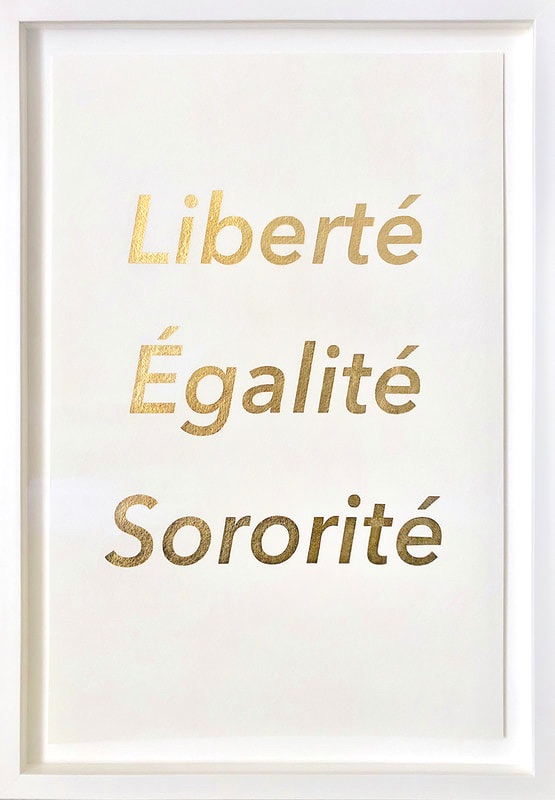







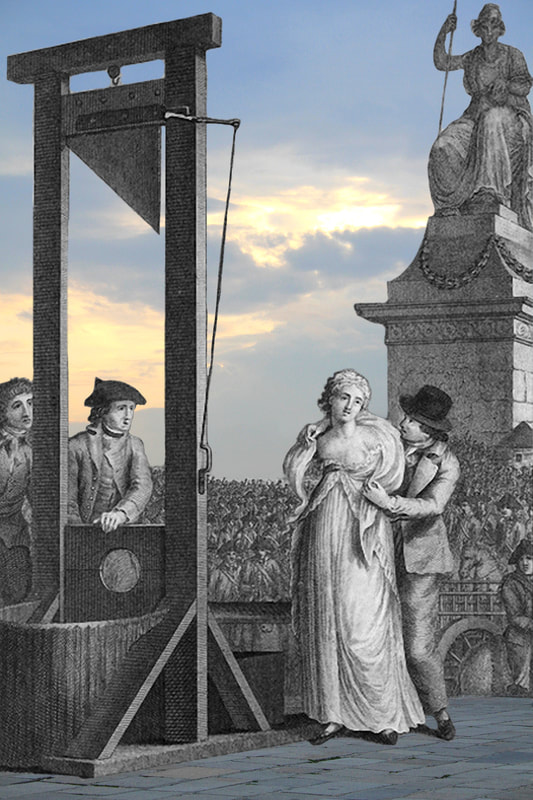










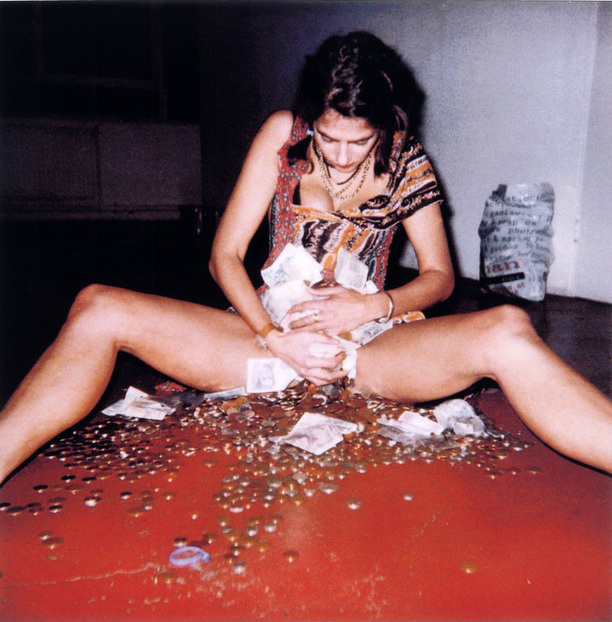




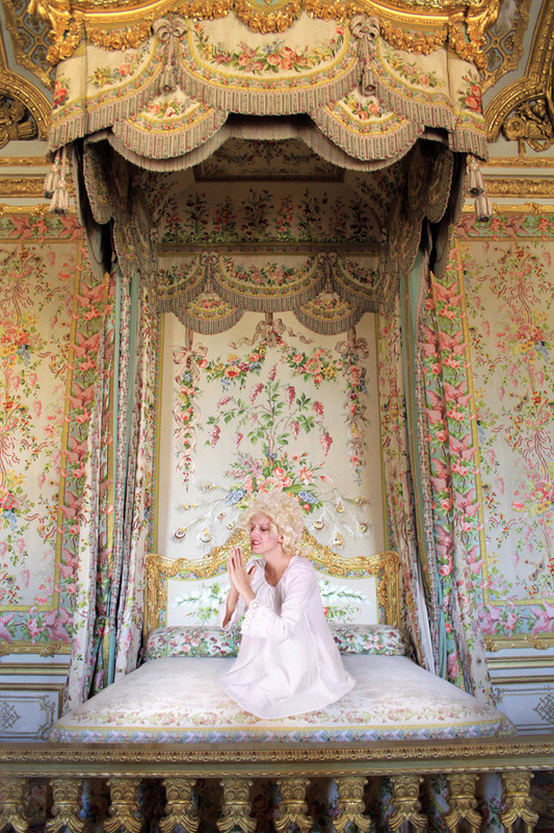




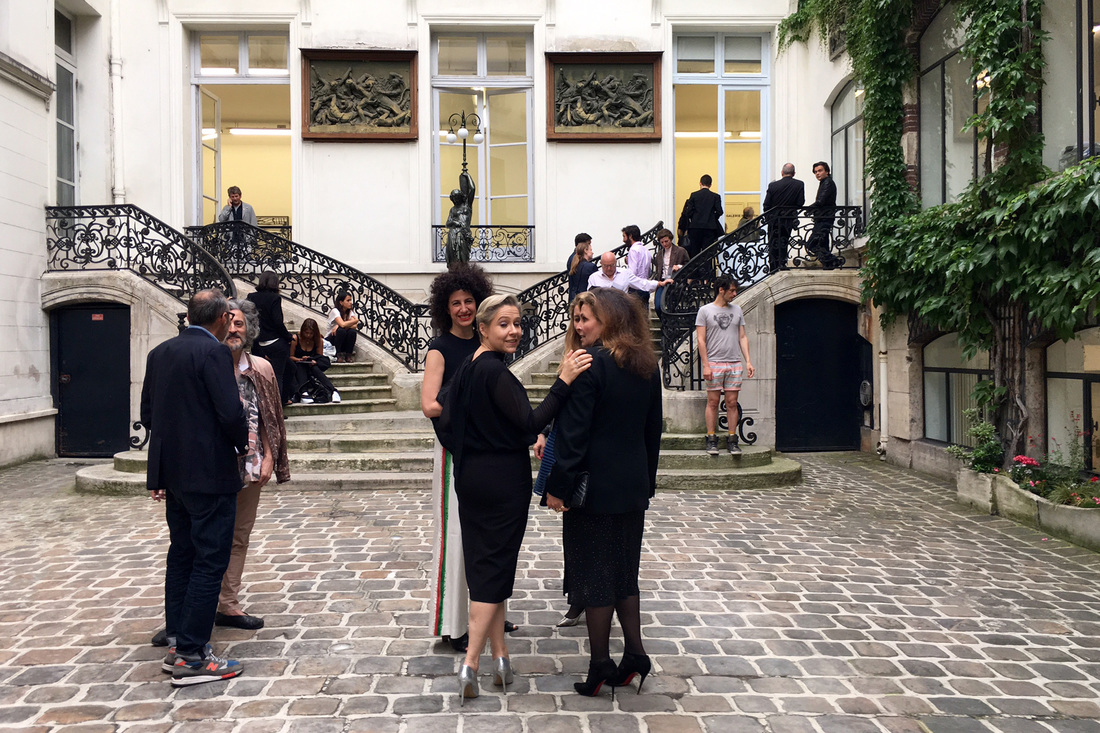




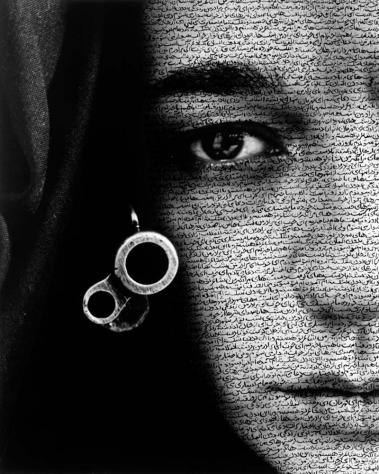





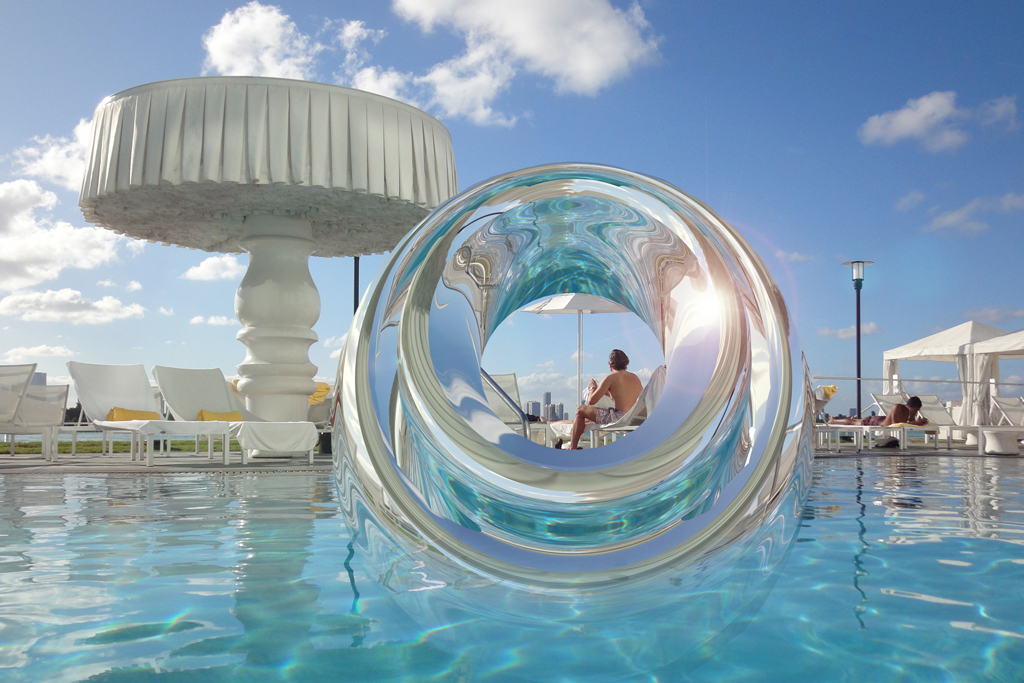
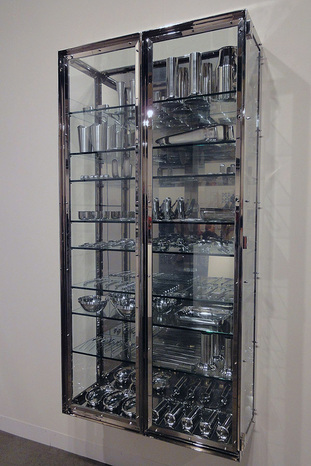

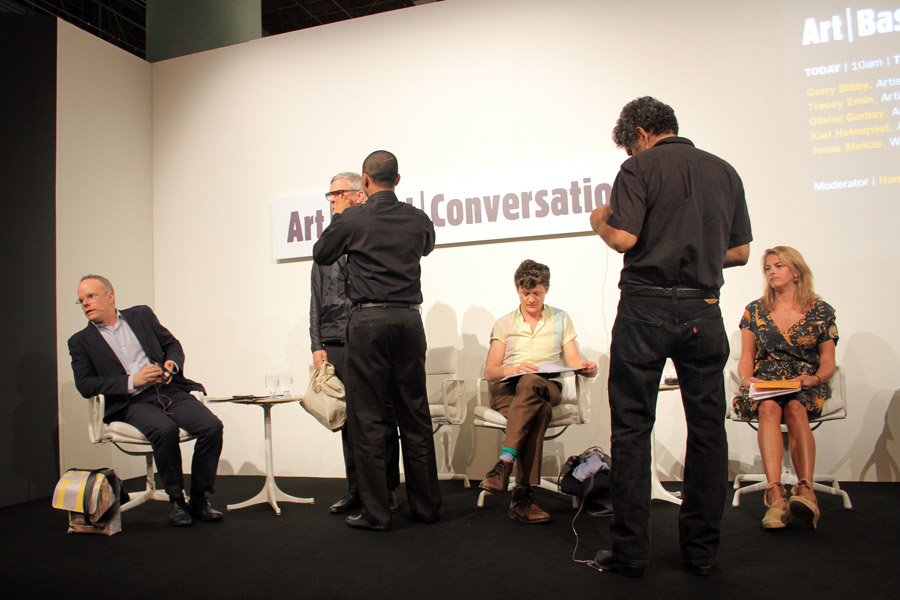




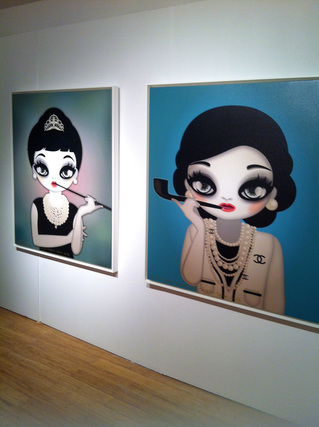








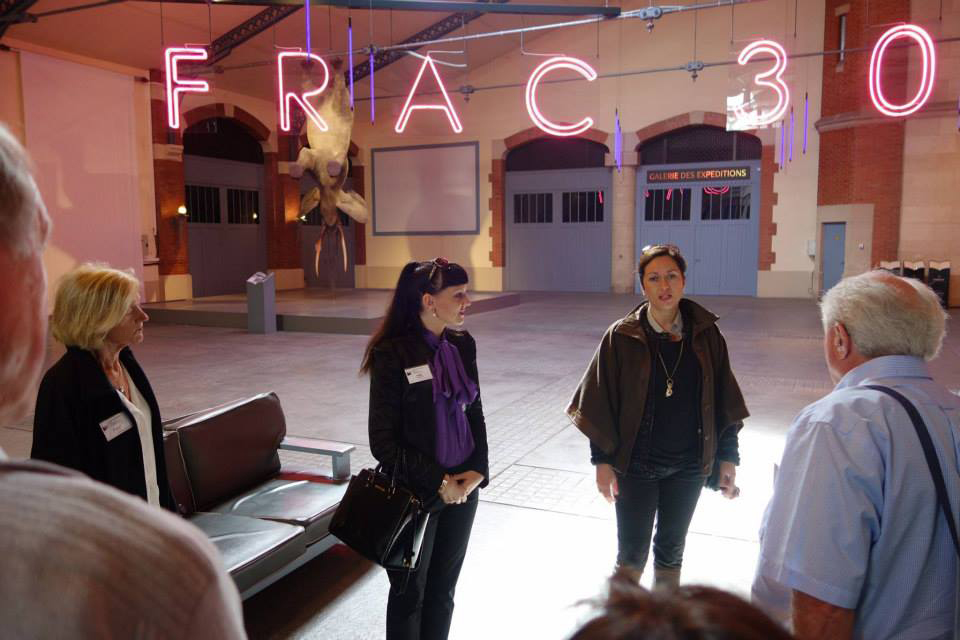

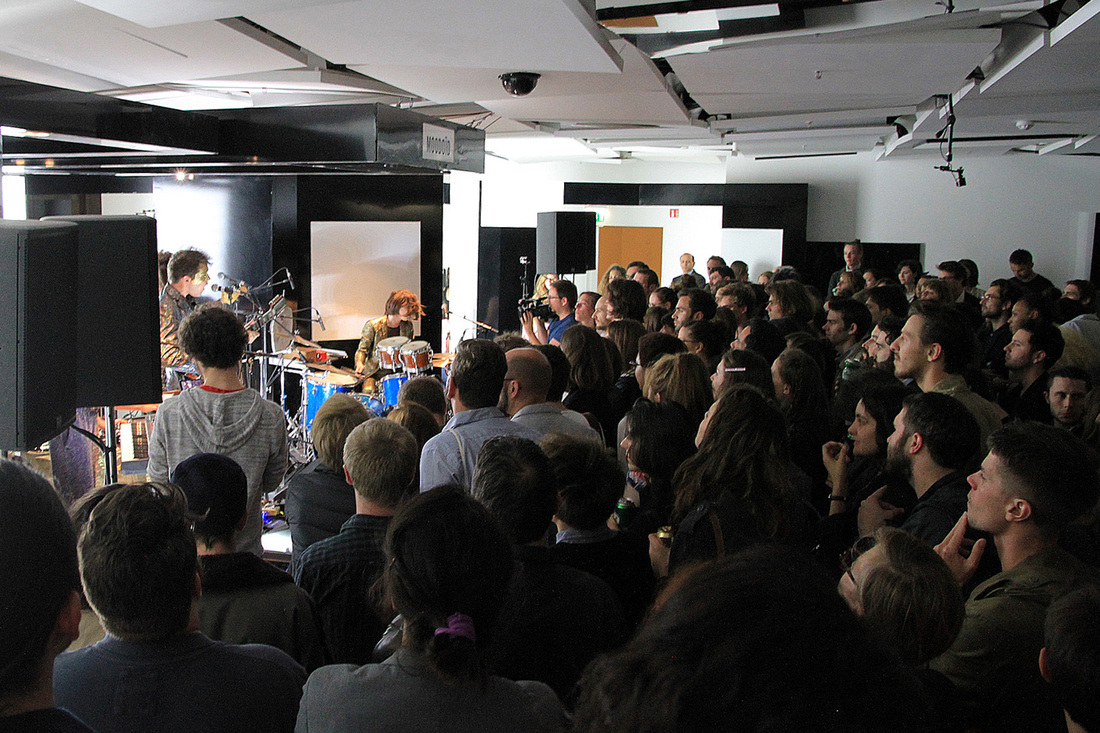





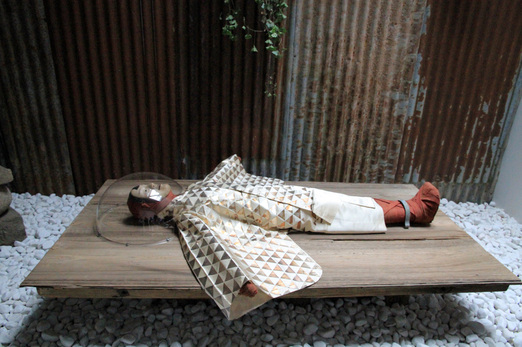





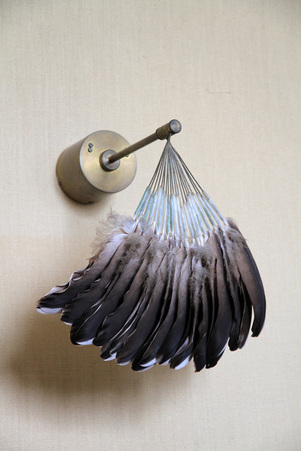



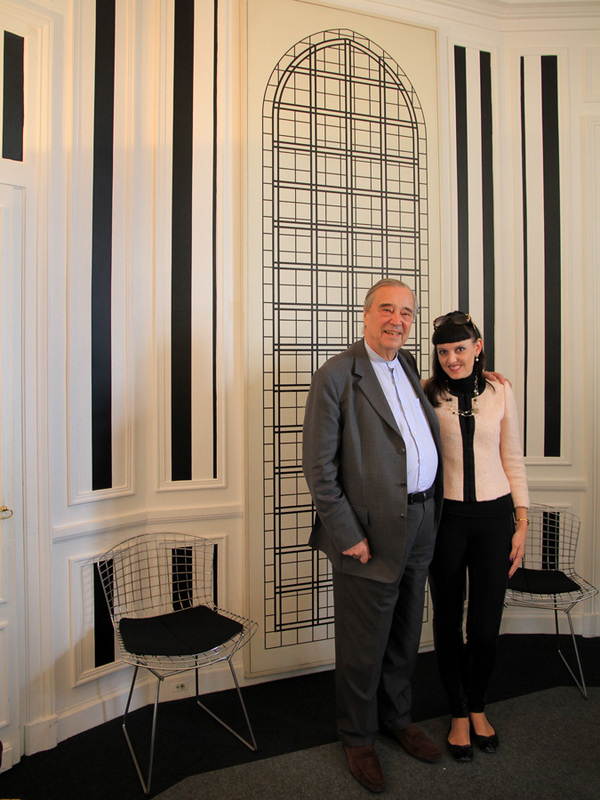
 RSS Feed
RSS Feed
